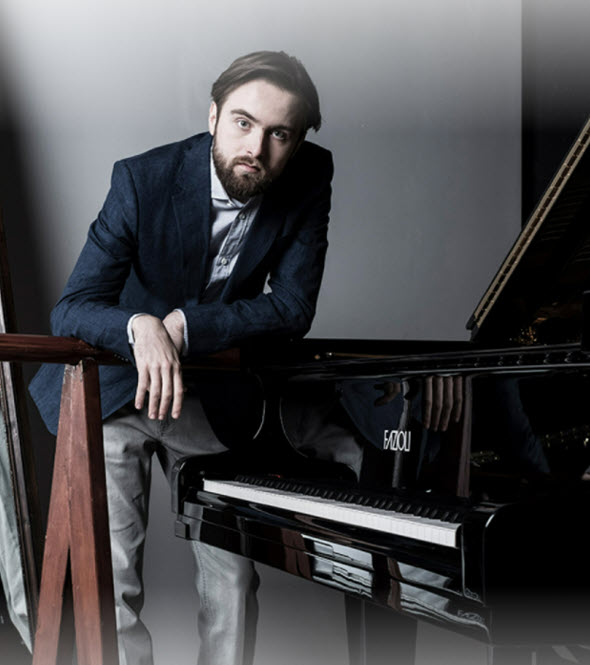Master of the moment: Pianist Trifonov shows why he may be the best among world’s best
Review: Daniil Trifonov, piano. March 6 at Orchestra Hall.
By Lawrence B. Johnson
In these distressing times…Who knows, maybe a year from now, my first impulse in writing a review of a pianist’s stunningly great performance will not be to begin with the words in these distressing times. But there it is, and here we are, and the Russian-born pianist Daniil Trifonov’s recital March 6 at Orchestra Hall felt like a gift, a balm, an occasion to rejoice at the wonder of human creativity and its presentation from such masterful hands.
Let us commence by getting the currently uncomfortable Russian issue out of the way. Trifonov, who turned 31 on March 5, was born in Nizhny Novgorod, in central Russia about 255 miles east of Moscow, in the expiring days of the Soviet Union. After early piano studies in Moscow, he relocated to the U.S. and took his advanced training at the Cleveland Institute of Music. Since 2017, he has resided in New York City. If there is a consensus leading pianist in the world today, it well may be Trifonov. Or it might be another Russian native, Evgeny Kissin. I’ve heard them both many times, and I tend to lean toward whichever one is in the room.
Such was the case at Trifonov’s imaginatively fashioned recital March 6, which ramped up with music in widely divergent styles by Szymanowski, Debussy and Prokofiev before cresting on the epic plane of Brahms’ Sonata in F minor, Op. 5.
Karol Szymanowski’s Piano Sonata No. 3 is a survivor of the 1917 Russian Revolution. When marauding Bolsheviks destroyed the composer’s family estate in Ukraine, they also trashed his two grand pianos. But Szymanowski escaped with the unfinished manuscript of his Third Sonata, a boldly forward-looking work that conflates the mysticism of Scriabin and the shimmer of Debussy with a grandiosity descended from Liszt through Brahms and Rachmaninoff. That said, the sonata also displays the technical and intellectual rigor of a highly skilled and eminently sophisticated composer.
Trifonov pounced on the opening movement’s pyrotechnic display while also keeping its concise structure in clear view. The ensuing Adagio unfolded with the heat and splendor of a grand rhapsody, which in turn gave way to a scintillating excursion through the brief scherzo. The big prize comes last in this sonata, a prodigious and wry fugue – not unlike the capstone of Mahler’s Fifth Symphony – that Trifonov dispatched with bravura flair and the most delicate touch.
A similar brand of modern Baroquery tops off Debussy’s three-movement “Pour le piano,” a headlong toccata, which became delicious sport in the hands of this consummate pianist. Still, it was the middle movement that perhaps offered the most arresting example of Trifonov’s profound mastery. It is a sarabande, a down-tempo dance form that Debussy marked “with an elegance stately and slow” – this pianist’s account, described to a T.
Prokofiev’s “Sarcasms,” a five-movement suite cast in brash, darkly tinged comedy, conceal their virtuosic requirements under a veil of antics. Trifonov offered a delightful tour of the composer’s sly wit and surprising musical turns.
Fascinating, amusing, provocative as the recital’s first half was, it was Brahms’ majestic Piano Sonata No. 3 that ultimately stamped Trifonov’s recital as special even by his standard. It is astonishing to think of the monumental F minor Sonata as the work of a 21-year-old composer – one who had absorbed the examples of Beethoven and Schubert to arrive at a distinctive musical idiom and structure entirely his own. This five-movement sonata is a symphony in all but the dressing out, expansive and intricate, an epic narrative of almost verbal expressivity. Trifonov’s patient, probing account of the opening movement set the stage for his lyrical embrace of the broadly drawn slow movement. In Brahms’ grand-scaled finale, the pianist indulged the music’s Schubertian elaborations with the sensitivity and comprehension of an artist with a clear grasp of historical line.
That was performance enough, but it was also all the whooping audience was going to get. Trifonov offered no encores, a rarity in this longstanding piano series offered under the aegis of Symphony Center Presents. Perhaps this particular moment was not the time for embroidery.




